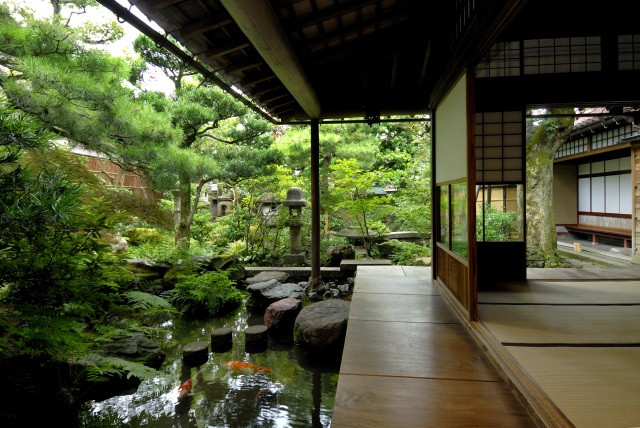Essential Kanazawa for the First Time Visitor
So it's your first time visiting Kanazawa City? Not to worry; we have the perfect itinerary to make sure you experience a little of what makes our city such a special place!
For access to Kanazawa from Tokyo, Osaka, Kyoto, Takayama, and Shirakawa-go, please click below.
Getting to Kanazawa: https://visitkanazawa.jp/en/getting-to-kanazawa
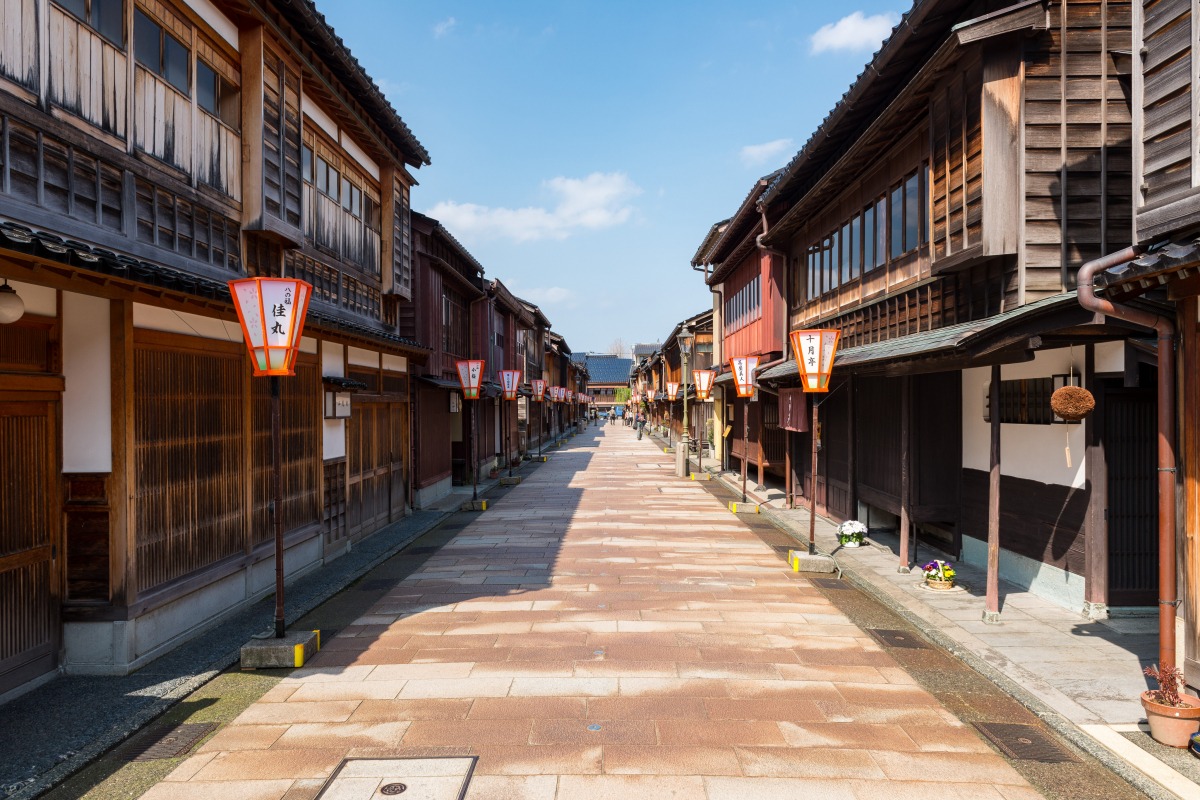
Arriving at Kanazawa Station
Kanazawa Station is where most visitors start their tour of Kanazawa, with trains and buses arriving from and departing to many destinations around Japan. In 2015, Kanazawa was connected to Tokyo by the Hokuriku Shinkansen bullet train line, making it simple and convenient to access from the capital. Extension of the Hokuriku Shinkansen line will continue until it eventually connects with Osaka in the future. You'll be greeted upon your arrival by Kanazawa's Motenashi (Welcome) Dome, a huge glass structure that protects those waiting for buses from inclement weather. It also connects the station with our iconic Tsuzumi-mon gate, created in a shape symbolizing the tsuzumi hand drums of traditional Japanese culture. Visitors will find many shops and restaurants in and around the station, with major shopping facilities built around the station in recent years. Most importantly, you will also find the Kanazawa Station Tourist Information Center in the station, where you can find all kinds of information about the attractions of our city, prefecture, and destinations beyond in a variety of languages. You can also get help from our English-speaking staff if you'd like your luggage delivered to your hotel, free rent umbrellas or rain boots, or any other services offered here.
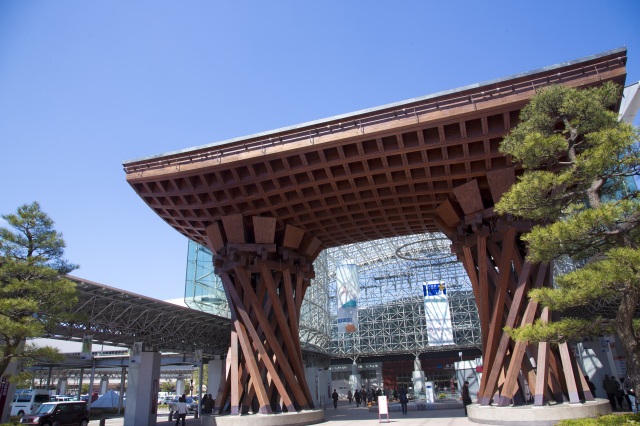
Stroll around Omicho Market and Lunch
Take a stroll around Omicho Market, the "kitchen of Kanazawa''. There are over 170 shops and restaurants located here, many of which are fishmongers selling their bounty of delicious fresh seafood caught in the nearby Sea of Japan. Yellowtail and shrimp are available throughout the year, and crab is sold in the market starting from November. You'll find the market bustling with locals and tourists during this time of the year. The market also contains shops selling local produce, both fruits and vegetables, some of which you may have never seen before elsewhere. And among the food-related shops, you'll find other shops selling a wide variety of goods, making Omicho Market a fun place to discover and explore more about Kanazawa. When you've worked up an appetite, visit Omicho market street or the Omicho Ichibakan, a refurbished building connected to the market that features many popular seafood restaurants. However you like your food prepared, you'll find a restaurant that appeals to your taste here, so rest and fill your belly with the fresh seafood Kanazawa is famous for.
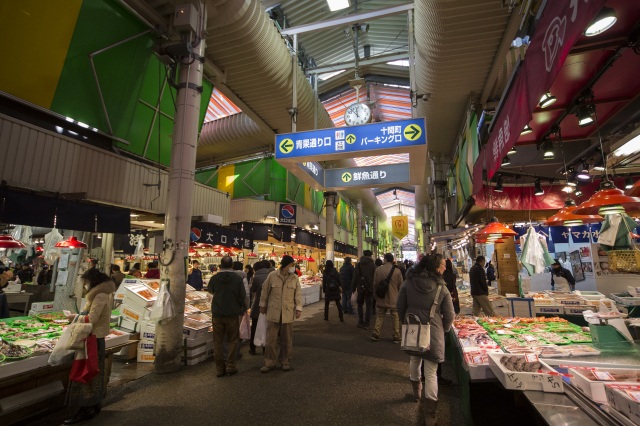
Higashi Chaya District
The Higashi Chaya district is Kanazawa's largest remaining districts of geisha tea houses, which served as places of entertainment for the wealthy during the Edo Period. The geisha sang, danced, and played traditional instruments for their guests while they dined and socialized together. Even today, several geisha houses continue to operate and you might hear the sounds of traditional music being played from the second story windows of the chaya teahouse in the district. The architecture of the Higashi Chaya district is fairly unique, with wood latticework over the first floor exterior. Two story buildings were prohibited during the Edo Period with the exception of geisha teahouses, making this neighborhood a rarity of an era long past. Today you will also find boutique shops, cafes, and restaurants inhabiting the old buildings alongside several teahouses still in operations. It is a popular location to rent a kimono and have a stroll, taking photographic memories with friends and loved ones. Peek inside the many establishments in the side streets and alleys of the Higashi Chaya district; you may be surprised by what you find!
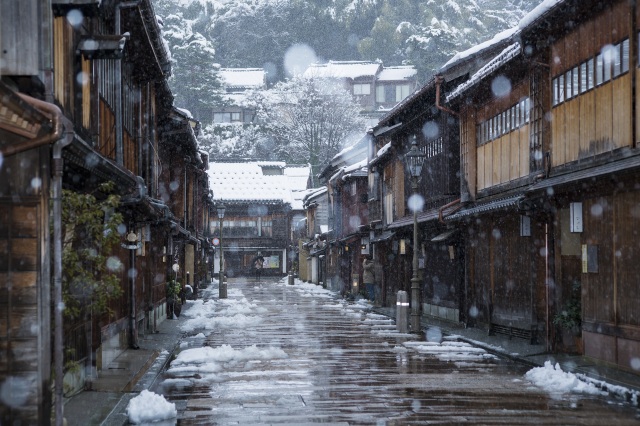
Shima in The Higashi Chaya District
A stunning example of chaya teahouse architecture is Shima, a teahouse built when the district was constructed at its current location in 1820 and has changed very little since then. The house has been designated as an Important Cultural Asset of Japan, and is one of the buildings that is opened to the public. The rooms and furnishings remain as they were in the Edo period, allowing visitors to enjoy the gorgeous historical atmosphere. You can also enjoy green tea with traditional Japanese sweets in the cafe "Kanson-an" next door.
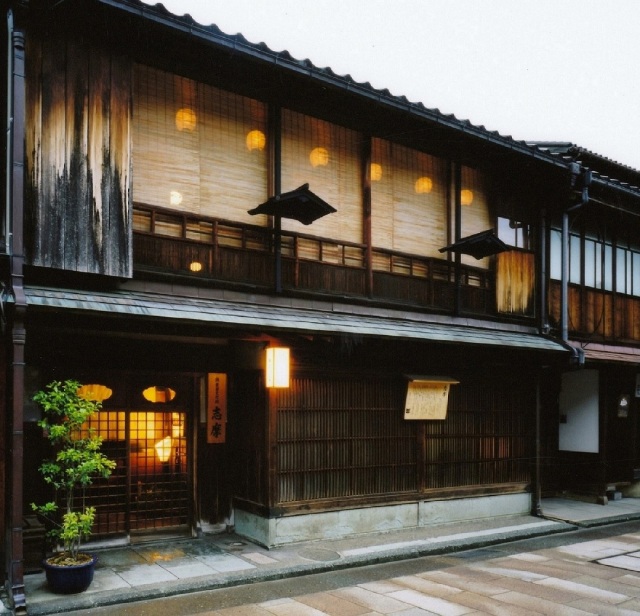
Break at Cafes
Kaikanro is the largest teahouse building in the Higashi Chaya district and still operates at night as a traditional geisha teahouse. During the day, however, it is open to the public as a place to enjoy dessert and tea or coffee. Take a look around the building and enjoy the history preserved here, along with the lavish details like a tatami room decorated in gold leaf. You can go traditional with Japanese sweets known as wagashi, or non-traditional, with the popular Kanazawa treat gold leaf soft serve ice cream.
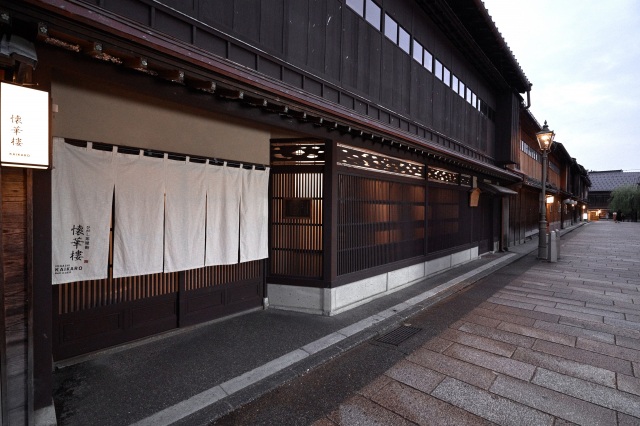
Gold Leafing Experience
With 99% of domestically produced gold leaf in Japan made right here in Kanazawa, it would be a shame to go home without a gold leaf inspired souvenir. While you could purchase something at many of the local shops, why not take the opportunity to make yourself a unique memory by taking part in a gold leaf pasting experience? Several shops around Kanazawa offer gold leaf pasting workshops, including shops in the Higashi Chaya district. Choose an item like a small plate or hand mirror and a stencil of a design you'd like to apply to it and an experienced
craftsman will assist you in creating your own little work of gold leafed art. At about 1/10,000 of a milimeter thick, gold leaf can be a bit of a challenge to manipulate, but once you get the hang of it, you'll be creating a shining souvenir of your visit to Kanazawa in no time.
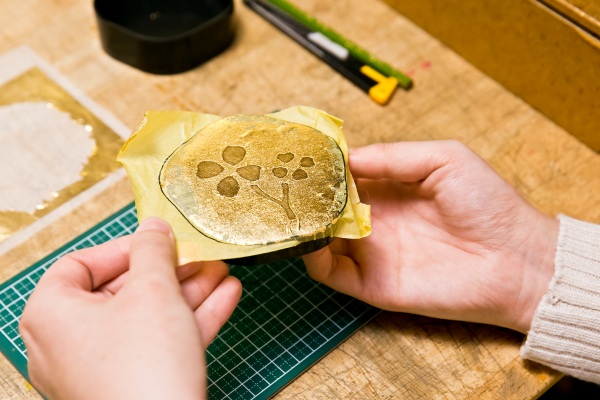
Enjoy dinner with gourmet tickets
With the abundance of gastronomical choices in Kanazawa, we can't blame you if you have a difficult time what to eat for dinner tonight. We suggest the Bimi ticket, which are tickets of various values that can be exchanged at select restaurants for a set meal you can receive at a discount by using the Bimi ticket. These restaurants and meals represent some of Kanazawa's finest establishments and types of cuisine and you'll certainly find something for everyone to enjoy. Whether you're craving sushi made from the morning catch of local fishermen, extravagant Kaga cuisine that looks as amazing as it tastes, or simple foods like ramen or curry, the Bimi ticket has you covered. They can even be used at some cafes if you only need a light meal or dessert and coffee. Bimi tickets can be purchased at either of the Kanazawa Tourist Information Centers or select hotels in Kanazawa (refer to the webpage for details). The ticket values are 1,000, 2,000, 3,000, 5,000, and 10,000 yen and at each level there are a wide variety of meals that they can be exchanged for. So don't let analysis paralysis get in your way of enjoying a great meal on your first night in Kanazawa; use the Bimi ticket and make things simple!
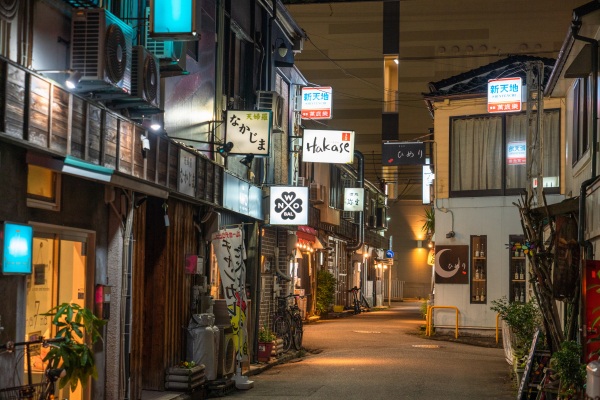
Accommodations in Kanazawa
You'll have no problem finding the right place to enjoy your rest and relaxation time during your stay in Kanazawa. From large top-tier hotels to cozy ryokan with staff attending to your every need, you'll find it here in Kanazawa. There are accommodations for every budget, those with meals included for people who would rather stay in and relax and without meals for those who would like to explore the city's restaurants, recently constructed hotels and Japanese style inns that are over 100 years old. There are a few major areas for accommodations in Kanazawa. The Kanazawa Station area has many accommodations, many of which can be reached on foot in just a few minutes. There are also a large number of accommodations in the Korinbo shopping district and the area around Omicho Market, both of which are on the Kanazawa Loop Bus route and are within walking distance of many attractions.
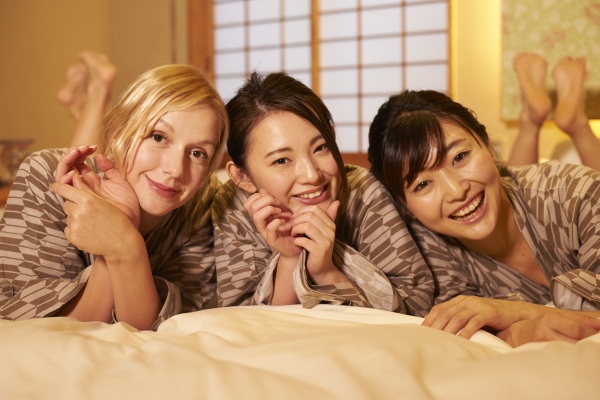
Kenrokuen Garden
Start your day with a stroll around Kenrokuen Garden, not only one of Kanazawa's top attractions, but one of the 3 most beautiful gardens in all of Japan.Its name is derived from an ancient Chinese text describing the six factors that make up a perfect landscape garden, factors that are all present in the various parts of Kenrokuen. The garden was built and maintained by the Maeda clan, who ruled the region from Kanazawa Castle, and was used by them and their honored guests alone until it was opened to the public in 1874. Stroll around the central Kasumigaike pond with views of the iconic Uchihashi-tei cafe built over the water and the karasaki matsu pine tree which were planted as seeds over 150 years ago. During the snowy season, magnificent conical-shaped rope structures are set up over the pine trees to protect the branches from being broken by heavy snow. As with all Japanese landscape gardens, Kenrokuen Garden presents a different view of itself throughout the changing seasons, so there is no wrong time to visit the garden and enjoy its exquisite views. The opening hours are from 7:00 to 18:00 Mar. 1 through Oct.15 and 8:00 to 17:00 Oct.16 through Feb.28/29. However, if you are an early riser, you can enjoy the garden in the early morning hours until the official opening hour with no admission fee and fewer crowds.
Early morning hours: Mar. 1– Mar. 31 from 5:00–6:45 Apr. 1– Aug. 31 from 4:00–6:45 Sept. 1–Oct.15 from 5:00–6:45 Oct. 16–Oct. 31 from 5:00–7:45 Nov. 1 –Feb. 28/29 from 6:00–7:45
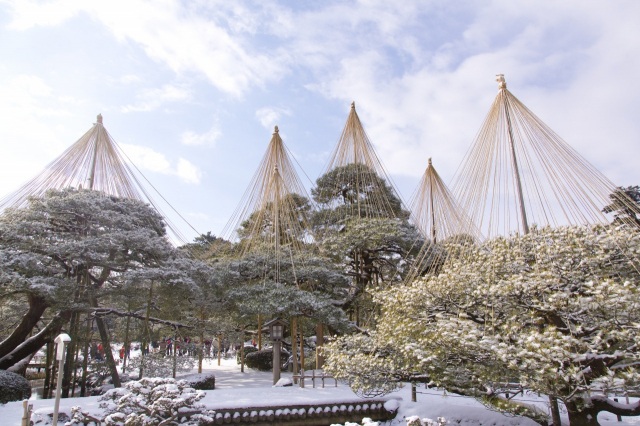
Breakfast at Kenrokuen Garden
Take breakfast at the newly renovated Kenrokutei restaurant, located within Kenrokuen Garden itself. Enjoy a Japanese style breakfast with grilled fish, rice, porridge, and other local foods (reservations required) in front of the oldest water fountain in Japan, powered by natural water pressure. The Kenrokuetei Cafe offers drinks and sweets, both traditional Japanese and other types. Choose from Japanese sweets or chocolates served with various styles of Japanese tea, coffee, latte, and soft drinks.
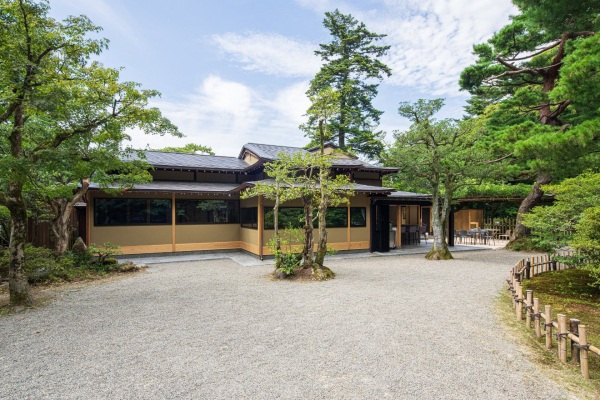
Kanazawa Castle Park
Kanazawa Castle was home to one family for the entire 280-year history of the Edo Period: the Maeda clan, who ruled over the Kaga Domain of present-day Ishikawa and Toyama. Although the castle enjoyed a peaceful history under the powerful Maeda clan, two major fires claimed many of its major structures, including the castle tower, which was never rebuilt. Two of its major structures, the Ishikawa-mon Gate and the Sanjikken Nagaya were rebuilt after the fires and are designated as important cultural assets. Several other structures have been reconstructed more recently, but using the materials and techniques of the original construction so they maintain their authenticity. The castle park is most famous for its many formidable stone walls that fortified the castle against potential attackers. Because walls were added during different periods of the castle's long history, the evolution of building techniques over the centuries can be clearly appreciated in the various walls around the castle park. Although the famous landscape garden Kenrokuen is literally next door to the castle, a smaller garden was constructed on the castle grounds by the 3rd Maeda lord in 1634. Gyokusen-inmaru Garden was destroyed at the beginning of the Meiji Period (1868–1912) but reconstructed to its former glory again in 2015. Today it is a location which can be appreciated during the day over a hot cup of matcha tea and seasonally illuminated at night for a stunning evening view.
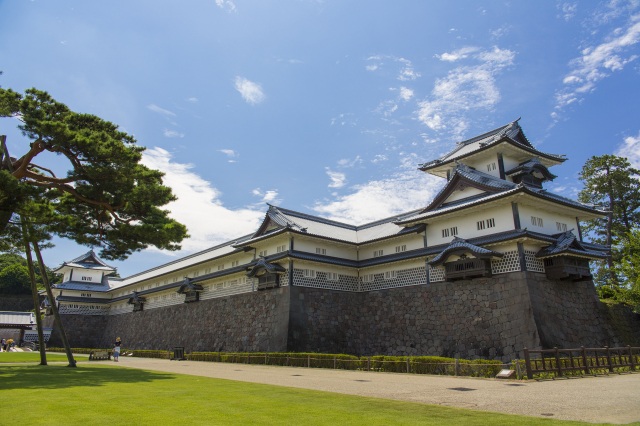
Tea Ceremony Experience at Gyokusenen Garden
Sado, the art of Japanese tea ceremony, has been a popular pastime for residents of Kanazawa for hundreds of years. In fact, Ishikawa Prefecture boasts the largest percentage of tea ceremony enthusiasts in Japan, even more than in Kyoto. The perfect setting in Kanazawa for a traditional Japanese tea ceremony experience can only be Gyokusen-en, a beautifully designed garden which contains the oldest tearooms in Kanazawa, Saisetsu-tei. The garden itself was commissioned by the Maeda family in the mid-17th century and is considered a landscaping masterpiece. With two distinct levels, and a waterfall between two artificial hills spanned by an arched bridge, Gyokusen-en is a garden that is beautiful from a variety of perspectives. The tea ceremony experience includes two servings of tea in Saisetsu-tei, the first served to you in the elegant traditional style and the second served by yourself with gentle instructions explained by your host. In this way, you will receive the full experience of being both guest and host of a Japanese tea ceremony. For a more casual tea experience, there are green tea services available in Kenrokuen Garden's Shiguretei tearoom and at Kanazawa Castle Park at the tearoom overlooking Gyokusen-in-maru Garden.
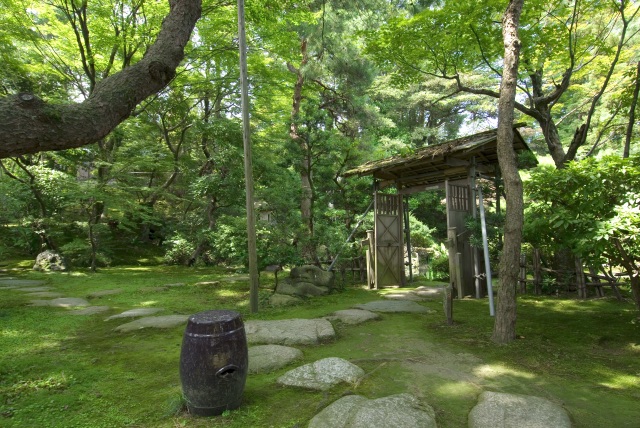
Local Gourmet Lunches
Another meal, another decision. Let's review a couple more options for famous Kanazawa foods you can try. There are many types of curry in Japan, but Kanazawa Curry is one of the best known styles in the country. The spicy-sweet dark-brown curry is most often found bathing a juicy cutlet of deep fried pork or chicken over a bed of rice and shredded cabbage. A filling meal that may leave you craving it long after you leave Kanazawa! Oden is a Kanazawa comfort food consisting of various types of meat and vegetables simmered in a dashi broth. The perfect way to warm up on a cold day, oden is well loved because you can select your favorite ingredients and eat as much or as little as you like. There are various Kanazawa-style gourmet options, so find your favorite and enjoy!
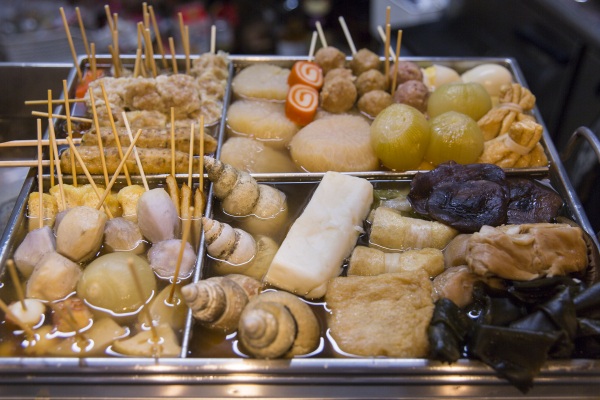
21st Century Museum of Contemporary Art, Kanazawa
Art has long been part of Kanazawa's identity, not just in the past but also in the present. A great example of Kanazawa's connection with contemporary art is the 21st Century Museum of Contemporary Art, Kanazawa. This modern glass building with a circular layout exhibits several experimental art pieces that visitors can interact with. Several of these commissioned works are integrated into the design of the building itself. Perhaps the most recognizable permanent exhibit is Leandro Erlich's "The Swimming Pool" a delightful play on perspective that allows visitors to experience the view from sitting or standing at the bottom of a swimming pool and interact with people above the water. With many interactive exhibits, wide open spaces to play and workshops geared for children, the museum is a great place for families to enjoy learning about contemporary art together.
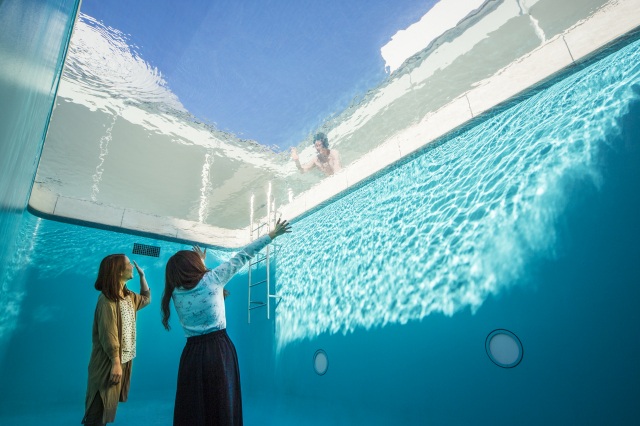
Nagamachi District
Kanazawa flourished in the Edo Period under the rule of the Maeda family and its population of over 100,000 made it one of the largest castle towns in feudal Japan. A city this large required an equally large administration, tasks given to mid and high ranking samurai to keep them busy during times of extended peace. The Nagamachi District is one of Kanazawa's best preserved samurai districts where many of these samurai had their homes. With no major fires or disasters during its long history, Nagamachi retains its time's quaint landscape. To maintain the state of the district as it always has been, the earthen walls surrounding the residences are covered with mats each winter to protect them from snow and frost damage. Take a leisurely stroll through the district and admire the many original buildings, some of which are open to the public as museums or shops.
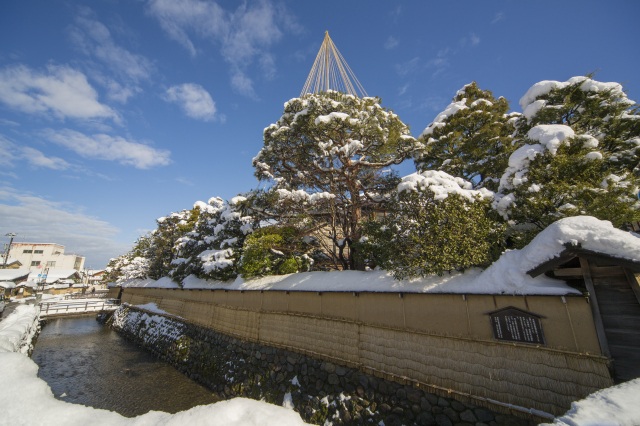
Nomura Samurai Family Residence
The Nomura Samurai Family residence is the only building in the Nagamachi District open to the public. The Nomura family was a powerful samurai family that faithfully served every generation of the ruling Maeda family through the entire Edo Period. When the Edo Period ended, samurai were stripped of their status and power and forced to sell their property, so the house eventually found its way into the possession of a private businessman. he house and garden were lovingly restored to their current state, so visitors can truly appreciate the sophistication contained in the details of the home. The garden was once listed as one of the top 3 gardens in all of Japan by the Journal of Japanese Gardening, and the rooms adjacent to the garden are arranged to have uniquely beautiful views of it.
